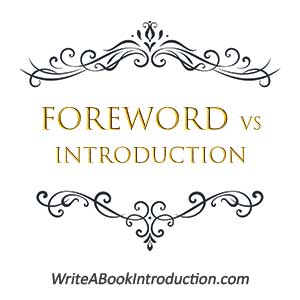What Is the Difference Between a Book Foreword and an Introduction?
 Understanding the difference between a foreword and an introduction is crucial for authors, collaborators, and readers alike. This article explores what makes a foreword different from an introduction, why each is used, and how they work together to frame a book. This article is part of a series about how to write a book introduction, written by a former literary agent who’s helped 400+ authors get literary agents and/or traditional publishers.
Understanding the difference between a foreword and an introduction is crucial for authors, collaborators, and readers alike. This article explores what makes a foreword different from an introduction, why each is used, and how they work together to frame a book. This article is part of a series about how to write a book introduction, written by a former literary agent who’s helped 400+ authors get literary agents and/or traditional publishers.
Book Foreword vs Introduction
A foreword is written by someone other than the author, often a notable figure, to endorse the book and highlight its significance. An introduction is written by the author, focusing on engaging the reader, explaining the book’s purpose, and providing a roadmap. Forewords add credibility; introductions set the stage.
What Is a Book Foreword?
A foreword is a short section, usually written by someone other than the author, that appears at the beginning of a book. It provides an endorsement, context, or credibility to the work.
Key Features of a Foreword
- Written by a Contributor: Typically written by a notable figure, expert, or someone connected to the book’s subject matter.
- Purpose:
- Endorses the book or the author.
- Establishes credibility and authority for the work.
- Provides context about why the book is significant.
- Tone: Often formal or reflective, focusing on the book’s value or the author’s expertise.
Common Elements in a Foreword
- How the contributor knows the author or is connected to the subject.
- Why the book is important or timely.
- Personal anecdotes or reflections related to the book’s themes.
- A call to action, encouraging readers to engage with the book.
How Is a Book Foreword Different Than an Introduction?
Unlike an introduction that’s always authored by the book’s creator, a foreword is written by someone else. The focus of a foreword is also different than that of the introduction. However, both the foreword and introduction should capture attention, and make it clear what the book’s about.
Key Differences Between a Foreword and an Introduction
- Who Writes It: A foreword is written by someone else, often a contributor (e.g., an expert or mentor); an introduction is written by the author of the book.
- Focus: A foreword focuses on endorsing the book or author; a book introduction explains the book’s content and purpose.
- Tone: The tone of a foreword is formal or reflective; the tone of an introduction is informative and engaging.
- Purpose: The purpose of a foreword is to build credibility and authority; the purpose of an introduction is to engage readers and provide a roadmap.
- Placement: If a book includes a foreword, it should appear before the introduction.
- Essential: A foreword is optional; an introduction is necessary or preferable.
When to Include a Foreword
A foreword is beneficial in situations where:
- Credibility Is Key: The book needs an endorsement from a trusted figure to establish its authority.
- Niche or Specialized Topics: The book benefits from a respected expert’s validation.
- New or Unknown Authors: A foreword by a prominent figure can attract attention and lend legitimacy to the book.
Example
A foreword in a leadership book written by a renowned CEO could validate the author’s ideas and appeal to a business audience.
When to Include an Introduction
An introduction is essential for most books, especially nonfiction, because:
- It Engages Readers: Provides a clear reason why the book is relevant to the reader.
- It Sets Expectations: Prepares readers for the book’s themes, tone, and structure.
- It Explains Purpose: Shares the author’s motivation and the book’s goals.
Example
In a self-help book, the introduction might outline the specific problem it addresses and give readers a preview of actionable solutions.
How a Foreword and Book Introduction Complement Each Other
- Foreword and Introduction Together: In some books, both sections are used to achieve different goals. The foreword builds credibility and sets the stage, while the introduction engages the reader and explains the book’s content.
- Order of Appearance: The foreword always precedes the introduction, as it’s written by someone endorsing the book, not the author.
Examples of Books with Forewords and Introductions
- Nonfiction Example:
Start with Why by Simon Sinek - Foreword: Written by a prominent figure in leadership to endorse Sinek’s concepts.
- Introduction: Sinek explains the importance of discovering your “why” and outlines the book’s structure.
- Memoir Example:
Becoming by Michelle Obama - Foreword: Not included (as it wasn’t necessary for the book’s purpose).
- Introduction: Obama reflects on her journey and introduces the themes explored in the memoir.
Conclusion – Book Foreword vs Introduction
The foreword and introduction serve distinct yet complementary roles in a book. While the foreword builds credibility and introduces the author’s work through the lens of another, the introduction engages readers by providing an overview and setting expectations. Knowing when and how to use each can enhance your book’s structure and impact, creating a more compelling experience for your audience. Whether you include one, both, or neither, their purpose should align with the goals of your book and its readers.
Now that you’ve read “Book Foreword vs Introduction,” click here for the next article about how to write a book introduction, “What’s the Difference Between a Prologue and an Introduction?.”


 This guide about
This guide about 